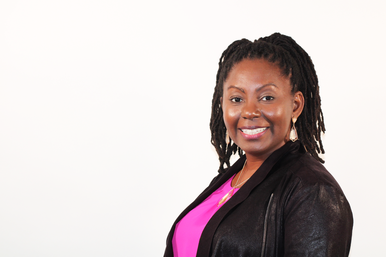|
We all know how fundamental reading is for our students, right? But what if we told you that integrating the science of reading can make teaching more fun and effective across all subjects? Whether you're in a science lab, history classroom, or even teaching math, these strategies can help increase literacy skills and create a love for reading. Let's dive into how we can make this happen!
What is the Science of Reading? The science of reading is basically a collection of research on how we learn to read. It brings together insights from psychology, neuroscience, linguistics, and education to give us a clear picture of what works best in teaching students to read. Here are the main ingredients:
How to Bring the Science of Reading to Life in Your Classroom 1. Mix Reading into Every Subject:
Why Create a Literacy-Rich Environment Including the Science of Reading in all subjects will ultimately create more literacy rich classrooms, which will lead to…
Bringing the science of reading into every classroom isn’t just about teaching reading; it’s about making learning more effective and fun across the board. By using these strategies, we can create an environment where every student has the chance to thrive. Let's make our classrooms places where reading is not just a skill but a gateway to knowledge and adventure. So, are you ready to bring the magic of reading into every lesson? Let's do this together and watch our students soar!
0 Comments
 We are frequently asked to assist teachers with small group instruction. These requests usually come in the late fall or early spring semester of the school year after classroom routines have been established. This year we are offering campus support targeting literacy routines. You see, establishing literacy routines in classrooms is crucial for creating a structured and effective learning environment. Why Literacy Routines? Let's look more closely at why these routines matter: 1. Stability and Predictability:
Literacy Routines vs Regular Classroom Routines: Is there a difference? Literacy routines and regular classroom routines and procedures both play essential roles in creating a structured and effective learning environment, but they focus on different aspects of classroom management and instruction. Key Differences
Both literacy routines and regular classroom routines are crucial for creating a well-rounded and effective educational experience. Implementing both ensures that students benefit from a stable, organized environment and targeted instructional practices that promote literacy and overall academic growth. Examples of Literacy Routines There are a wide variety of literacy routines teachers can implement in their classrooms. Here is a snip of our extensive list of routines we coach teachers to put into practice: In the landscape of modern education, the synergy between reading and writing is undeniable. Both are foundational to effective communication and critical thinking, yet they are often taught as separate subjects. Most of the standardized tests across the country have integrated writing in all content-area exams. With this in mind, integrating reading and writing instruction across all classrooms can create a more holistic and enriching educational experience for students. Here’s why this approach is essential and how it can transform learning.
1. Enhancing Comprehension and Retention When students engage in both reading and writing, they are more likely to understand and retain information. Reading provides the content, while writing allows students to process and internalize that content. By writing about what they read, students can clarify their thoughts, make connections, and reinforce their learning. This dual approach encourages deeper comprehension and long-term retention of material. 2. Fostering Critical Thinking Reading and writing together promote critical thinking skills. Reading exposes students to various perspectives and ideas, while writing requires them to analyze, synthesize, and evaluate these ideas. When students write in response to what they read, they must organize their thoughts, present arguments, and support their claims with evidence. This process improves their ability to think critically and independently. 3. Developing Communication Skills Effective communication is a cornerstone of success in both academic and professional settings. Integrating reading and writing instruction helps students develop their ability to articulate ideas clearly and coherently. Reading broadens their vocabulary and understanding of language structures, while writing provides practice in expressing thoughts precisely. This combination is essential for cultivating proficient communicators. 4. Encouraging Creativity and Expression Writing about reading material encourages creativity and personal expression. Students can explore different genres, experiment with writing styles, and find their own unique voice. Reading diverse texts exposes them to various narrative techniques and literary devices, which they can incorporate into their writing. This interplay between reading and writing fosters a rich, imaginative learning environment. 5. Bridging Subject Areas Integrating reading and writing across all subjects, not just language arts, creates a more interconnected and comprehensive curriculum. For instance, in science classes, students can read scientific articles and write lab reports, reinforcing their understanding of scientific concepts. In history, they can analyze primary sources and write essays on historical events, deepening their grasp of historical contexts. This cross-disciplinary approach ensures that literacy skills are continually developed and applied in meaningful ways. 6. Meeting Diverse Learning Needs Students have varied learning styles and needs. Integrating reading and writing instruction allows for differentiated learning experiences. Some students may excel in reading but struggle with writing, or vice versa. By combining these activities, teachers can provide support and challenges tailored to individual students, helping them develop a balanced set of literacy skills. Strategies for Integration We provide campus support packages to help teachers integrate the following reading and writing strategies seamlessly in their classrooms through job-embedded professional development sessions.
Integrating reading and writing instruction in all classrooms is not just beneficial—it is essential for fostering a well-rounded, critical, and creative learning environment. By merging these fundamental skills, educators can enhance students' comprehension, critical thinking, communication, and expression, preparing them for success in all areas of life. Embracing this integrated approach ensures that students are not just passive recipients of information but active, engaged learners ready to navigate the complexities of the world with confidence and competence. How do you integrate reading and writing in your classroom? Let Golding Touch help you create classrooms where students read critically and write with skill and proficiency.  I believe it was Jen York-Barr that is credited with saying, "The person doing the talking is often the person doing the learning." It's one of my favorite quotes that point out the importance of allowing all students to talk and verbalize their thinking. What I love about teaching reading and writing is the way that listening and speaking bolsters each of these language domains. The four language domains are interconnected, reciprocal skills. Writing and speaking are both outputs, while reading and listening are inputs. The best reading and writing teachers are skilled facilitators who strategically plan meaningful interactions between students and content, students and peers, and students and themselves. These interactions are anchored in talk, structured with intentionality, and cultivated by formal or informal discussions about what students are reading, writing or learning. A general rule of thumb I offer when pondering teacher-student talk ratios is 10 to 2. For every 10 minutes of teacher talk, there should be at least 2 minutes of student talk. Skilled facilitators know it's imperative that learners are given time and space to share their thinking about the content they're learning. This allows educators to lean in and hear students express understanding or misconceptions related to the content. A few strategically planned discussion questions can help you discern who truly understands from who is truly lost. Please don't think that you can just plan some questions, head into your classroom tomorrow, and make your students talk to one another. Talking classrooms are not created overnight. Teachers have to create a dialogic learning community by establishing routines and expectations for accountable talk and modeling them. Most teachers use accountable talk sentence stems to provide students with options for respectable conversations. These sentence stems serve as scaffolds for all students, especially our second language learners. Model how to use the stems by having fishbowl conversations, where you and another student or a group of students demonstrate how a conversation can go. This will allow opportunities for you to highlight "dos and don'ts." I suggest starting with casual, non-threatening questions, before rolling out content-specific discussion questions. We tend to talk more when discussing topics we are most familiar with, especially if it's about our likes and dislikes. Before discussing an inference from the text using text evidence, you can talk about what you like or dislike about the text, whether you agree or disagree with the author or a character's actions, etc. Here are a few of my favorite discussion strategies:
Share your favorite ways to get your students talking in the comments. |
AuthorMalene Golding has been a professional educator for over twenty years, teaching, coaching, and managing reading and writing teachers, as well as administrators and specialists. Archives
July 2024
Categories |


 RSS Feed
RSS Feed
